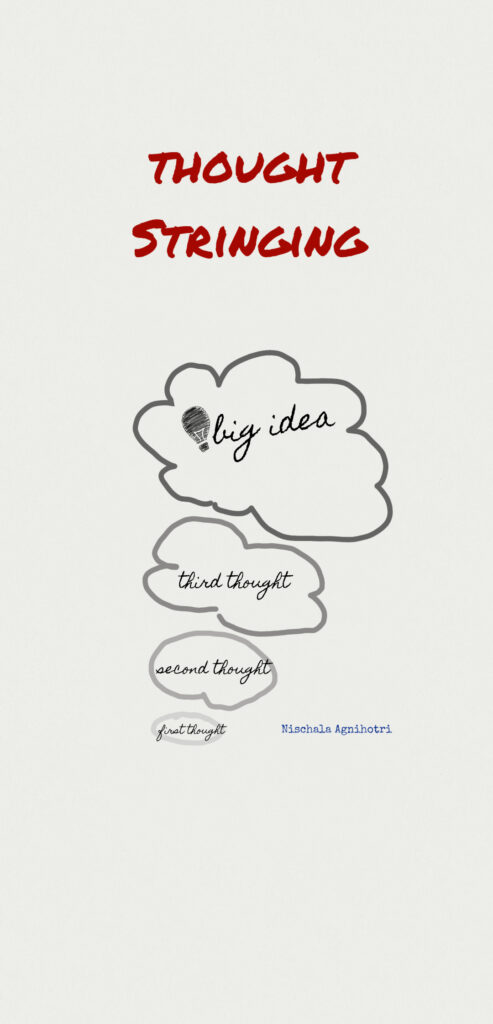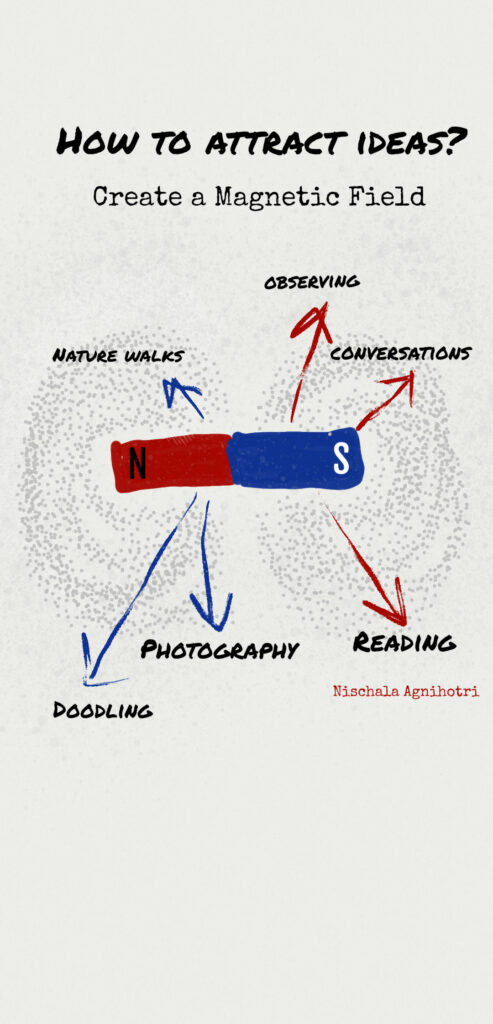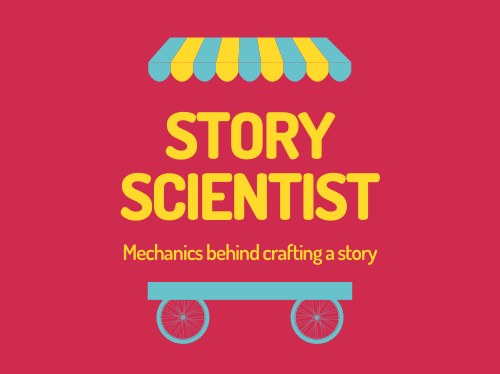If you don’t know what to write, let me share a secret in the words of Dee Hock. Dee Hock, the founder of Visa quoted, “The problem is never how to get new, innovative thoughts into your mind, but how to get old ones out. Every mind is a building filled with archaic furniture. Clean out a corner of your mind and creativity will instantly fill it.”
The most prolific writers and the bestselling authors have cracked it! They got rid of the “I don’t know what to write” zone by bringing together two things – process and habits.
While bringing these two together, a weird or rather, an unexpected pattern emerged. The habit remained something very unique to the author’s interest such as photography, doodling, conversations, walking, gardening and so on. But these habits were tied back to the author’s writing process.
Writing was seldom one of those habits!
The Process – Habit marriage: How the bestselling writers use this technique to generate ideas?
Over the years, I have studied some of the bestselling authors and their writing styles. I have listed eight such authors, their anchoring habit that is married to the actual writing process.
How the bestselling writers use this technique to generate ideas?
So, what’s your habit?
Identify a habit that is very dear to you which can transpire into thoughtful ideas that resonate with your audience.
Tie this habit to your writing process. To ace my writing to the next level started practising doodling and watching one movie every week very critically.
I use my notes on Notion, cue cards, Wikipedia and my digital pen to let ideas breed around me.
What about Writer’s Block?
To be honest, writer’s block doesn’t exist. It is an excuse that writers find their comfort to procrastinate.
Great writers stay away from this sort of procrastination. They build an anchor that would help them bounce back on the bed of ideas, just like a trampoline.
Dan Brown, one of my favorite mythological thriller writers quoted that he uses inversion therapy to help himself with writer’s block. He uses gravity boots and says, “hanging upside down seems to help me solve plot challenges by shifting my entire perspective”.

Idea Fluency: Why I don’t know what to write?
“I don’t know what to write”- if you have asked this question more than once to yourself, it means something is brewing in your mind. But, you are not sure which of those ideas are good to be published and shared with the world. I don’t know what to write – really means many things apart from what it states. It could mean that you are really falling short of ideas. Or, you have hit a dead end of new and original ideas. Or that you are unsure of which of those ideas are worth pursuing and building upon further. Or all of the above could be true.
What distinguishes a commoner from a great thinker is not the lack of ideas, but the lack of ‘Idea Fluency’.

Thought Stringing , a way to improve Idea Fluency
Just like one pearl doesn’t mean anything, you need a string of pearls to make an ornament, a necklace.
Daniel Handler—more commonly known as Lemony Snicket is popularly known for his children’s series, “A Series of Unfortunate Events.” He mentioned that, “I’ll have some idea or see something or an event will strike me in a certain way. I’ll string it along immediately and think of where it could lead and where it could go. I think of a story.”
Stacking one thought over the other with deliberate observation and trying different permutations and combinations of those thoughts leads to great ideas. Daniel Handler also shared that he gets most of his ideas by noticing everyday things and considering them in a different way.
The Magnetic Ideation Field: How to attract ideas?
Scientifically, Magnetism is caused by the motion of electric charges. In an atom, when electrons and protons move rapidly on either side of the nucleus, a Magnetic field is formed.
When similar thoughts move rapidly one after another, sometimes converging each other, a Magnetic field is formed.
Take a deeper look into substances such as iron, cobalt, and nickel, most of the electrons spin in the same direction. This makes the atoms in these substances strongly magnetic—but they are not yet magnets.

Your thoughts could be scattered all over the place, but it’s not yet an idea. To become magnetized, another strongly magnetic substance must enter the magnetic field of an existing magnet.
Your thoughts also need a channelize direction to create more ideas. But to attract more ideas consistently, you need to another substance. For a magnetic idea field, that substance would be your habits.
The Ideator’s Framework: How to figure out what you should be writing about?
If you want to create a magnetic field to attract more ideas, then gather habits that come together that form a conduit which would always remain charged up with your discipline. This attracts ideas automatically.
The Ideator’s Framework is designed to capture your thoughts across time and mental space – when put together can form ideas.
| Then (past) | Now (present) | Later (future) | |
|---|---|---|---|
| P-Patterns | |||
| A-Anecdote | |||
| U – Unique | |||
| L – Logical | |||
| V – Vulnerabilities | |||
| I- Imagination | |||
| E – Experience | |||
| W – Worldview |
A simple and scalable framework that can help you write when you don’t know what to write. In this framework, you need to classify your thoughts across a span of mental space and period in time. First step is to lay your thoughts across different buckets of mental space that has the acronym PAUL VIEW.
PAUL VIEW – your mental space
PAUL VIEW is an acronym to remember the different elements of mental space .
P–Patterns – They are observations and findings from experiments that you perform. Mostly, these patterns emerge while studying data sets and their behavior.
- How would variables behave in the absence of some data points? (E.g. Equations or Formula)
- Why certain data points are necessary to study the data set? (E.g. Trends)
- How would variables interact and evolve in the future to see new patterns? (E.g. Non committal Predictions)
A–Anecdote – Write down something inspiring coming from your childhood, adolescence, adulthood.
- What stories are memorable and inspire you from the past? Something that have been foundational to form your character and the principles that you live by?
- How do you apply these stories in your present life?
- What is the advice that you would spread from those stories for the future generation?
U – Unique – Articulate the differentiation and value proposition.
- It belongs to only you. What have been those skills, characteristics, stories, incidents that were unique to you?
- What are some of the unique observations that you have made? One statement that defines you.
- What is unique that will stay with you forever?
L – Logical – Process and proof. This is best when you work around templates such as What if? Why now? If, then, and so on. You need proof and validation to expand on these ideas. Here are more templates that you could explore.
- Now is <> because something happened in the past <> (E.g. something that has been a part of your product)
- Why <_____________> works now and not before or later? (E.g. discounts and offer validation)
- You need this now <> to be able to achieve something later <____> (E.g. Your product packaged in a certain way)
V – Vulnerabilities – Fears and Objections. What you choose to hide from others? This is not typically shared with a fear of judgement and non-association or association. But, sharing them with the world can prove your inner strength. “Me too” campaign in it’s true sense was a test to vulnerability. “The Ice Bucket challenge” on Facebook was also something similar. Other examples are Flashmob, etc. The process of identifying your vulnerabilities could be very introspective.
- What fears and judgements stopped you/ your team/ your product from succeeding?
- What are you trying to overcome/ relearn/ confess to changes things now?
- What are your objections, fears or judgements that you assume could stop you from succeeding in the future?
I- Imagination – Vision that you can see ahead. Not many people can boldly and clearly articulate their vision. It needs the power to believe in your dream and vision.
- How is it seen now?
- How would it transpire?
- What would it result in?
It requires you to see ahead and imagine about things that may not exist now.
E – Experience – Learnings. Experience is another element that is unique to you. Talk about the climax of each experience.
- What did you learn at the end of each experience?
- What is the experience that led you to apply some of your learning for a success story?
- What experiences inspire you to achieve or lead something in the future?
W – Worldview – Narrative and counter Narrative. Mostly your strong opinionated agreements and disagreements become a part of this section.
Then. Now. Later. The time scale.
Find as many questions as possible to fill each row against the memory lane, your current state and plans for future.
This helps you with a minimum of 24 ideas. This is solo work. But, a lot of us who work in groups would also need techniques that help in co-creating ideas.
3 ideation techniques that you could try in a group
1. Rapid Ideation
All you need is post-its and marker pens. You need your participants in the group to start rapidly writing ideas on post-its and pasting them on a wall. Have a timer for this activity. It could be no more than 10 mins. If you have 3 – 5 participants in this group, then present the problem to the group and have each one of them write their ideas. Have them pasted on the wall and start voting.
2. Brainwriting: 6-3-5 method
After Alex Osborn’s brainstorming’s shortcomings, a salesman named Bernd Rohrbach published this new technique of idea generation in a magazine. It is a quite method without too much loud talk. Working in groups bring a compounding impact. Brainwriting in the 6-3-5 format promises 108 ideas in 30 minutes while working with a group.

How does it work?
- It requires 6 participants plus a moderator.
- Each one in required to write down 3 ideas.
- Complete writing them in less than 5 minutes.
- The outcome after 6 rounds, during which participants swap their worksheets passing them on to the team member sitting at their right, is 108 ideas generated in 30 minutes.
3. Domino Analogies:
A technique that helped world famous inventors to think in silos and find Eureka moments
Apart from the invention of a light bulb, the inventor Thomas Edison also takes credit for another invention. It was the kinetoscope. The kinetoscope has made today’s motion picture a reality. It is a forerunner of the motion-picture film projector. Edison received inspiration for this idea after a conversation with a famous photographer Muybridge.
Eight months after meeting Muybridge, Edison spelled out the analogy in a preliminary patent for the kinetoscope: “I am experimenting upon an instrument which does for the Eye what the phonograph does for the Ear, which is the recording a reproduction of things in motion, and in such a form as to be both cheap, practical and convenient,”
Also Kepler, the famous astronomer solved the problem of ‘why planets furthest from the sun move slower than those closest to the sun?’, using an analogy. He said, “What if that sun-centered spirit (later known as gravity) was like light? Just as light can travel invisibly from the sun to illuminate a given place, Kepler proposed, a force could travel from the sun to a planet and affect its motion.”
You take inspiration from an incident, event, object, conversation, or anything around you. Simplify a complex problem by relating to it. One over another, you would start implying the domino effect while developing your analogies.
An excerpt from my daily reading:
As each domino represents a goal, knocking over each domino provides a sense of accomplishment; a step in the direction of empowerment. If you never reach your final domino, you have still benefited by growing and attaining knowledge that may be used in all sorts of ways in the future along other paths.
Better & More Original Ideas: Become a Thought Leader
Ideation is fundamental to evolve as a Thought Leader in a space that you enjoy and want to thrive in. Explore the full course ‘Become a Thought Leader’ by filling the form here. Or, join as a member of Story Scientist to get full access to other courses, templates and workshops.
